| Home |
| Acknowledgments |
| Conventions |
| Glossary |
| Maps |
| References |
| Links |
| Articles |
| Thumbnails |
| Species
list |
| Family |
| Next
species |
Additional Photos

side
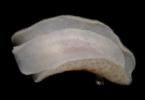
underside

rhinophores
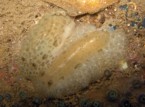
atypical patterns
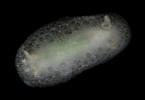
young, 8 mm

notum detail
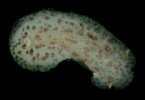
autotomized mantle
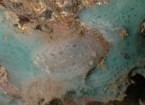
with food sponge

egg mass
_______________
GALLERY

Discodoris lilacina (Gould, 1852)
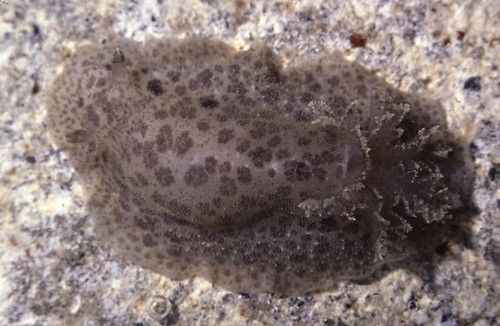
| Maximum size: 40 mm. Identification: This is a pale brown species decorated with irregular darker blotches. The notum is covered with small papillae that vary in length and the branchia are cream, frosted with white. Lines of patches on each side of the notum are often darker than the rest with the larger patches having "leopard-like" internal structure in contrast to the solid spots of the similar-appearing Jorunna alisonae. The underside is variably flecked with brown. Natural history: Discodoris lilacina is a common nocturnal species. It is found primarily in the low intertidal and tide pools though, rarely, it may occur at depths up to 21 m (69 ft). (Bertsch and Johnson, 1981) It occurs in protected to exposed rocky habitats and, rarely, in Halimeda kanaloana beds. It sometimes autotomizes portions of its mantle when disturbed, presumably as a defensive measure, and it often feeds on a turquoise encrusting sponge, Haliclona caerulea. (Note 1) It lays a cream egg mass with a variably ruffled margin that hatches in about five days in the laboratory. Distribution: Big Island, Maui, Oahu, Kauai, Kure: widely distributed in the Indo-Pacific. Taxonomic notes: This is the species listed as Discodoris fragilis (Alder and Hancock, 1866) in Kay, 1979, Kay & Young, 1969 and Bertsch & Johnson, 1981. It is also listed in some sources as Tayuva lilacina. It is probably mentioned in Edmondson, 1946 as an unnamed species referencing Fig. 96c. It was first reported from Hawaii in Gould, 1852 (as Doris lilacina). Photo: John Hoover: found by Darrell Takaoka; May 6, 1997. Observations and comments: Note 1: We've often found it associated with this sponge in the field and have observed it feeding on fragments of the sponge in dishes. |
| Thumbnails |
Species
list |
Family | Next species | Top |